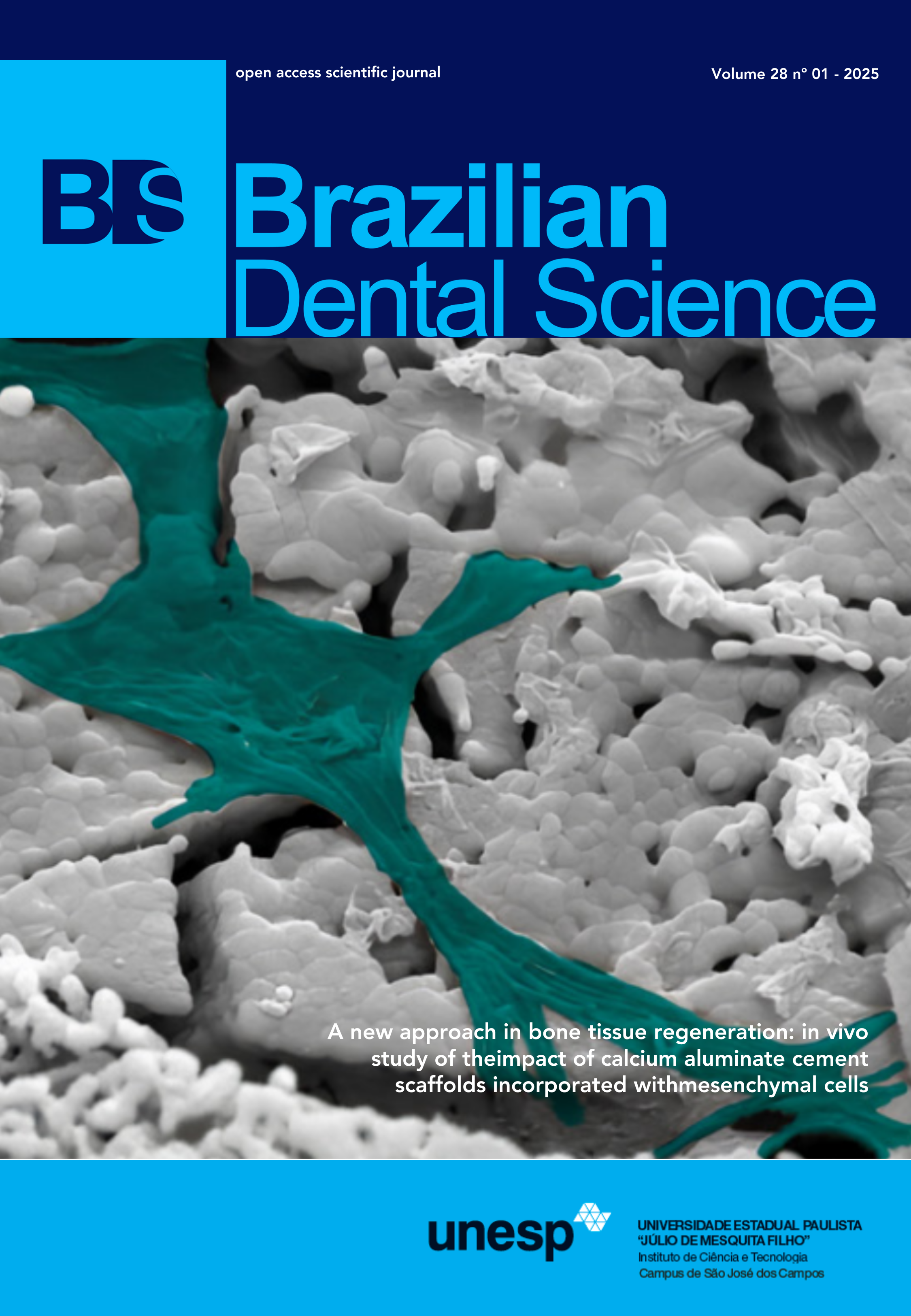Use of a gel containing a phthalocyanine derivative in palatal wounds after gingival graft removal: case series
DOI:
https://doi.org/10.4322/bds.2025.e4596Resumo
Background: Gingival grafts are used to correct mucogingival defects around teeth and implants, but post-operative morbidity, including pain and discomfort, still represents a clinical challenge. Studies using phthalocyanine derivatives (PHY) demonstrated antimicrobial effects, but these substances also seem to present beneficial properties in wound healing. Objective: This case series aimed to evaluate the use of a gel containing 0.1% PHY in the post-operative healing of gingival graft donor sites, with a focus on reducing discomfort and promoting healing. Material and Methods: Five healthy patients were submitted to standardized surgical procedures for root coverage with connective tissue grafts (de-epithelialization technique) and coronal advanced flap. After surgery, they received instructions to use 0.1% PHY gel in palatal donor sites. Clinical and somatosensory parameters were evaluated, as well as analysis of patient-centered outcomes (use of analgesics, difficulty of chewing and pain in the donor areas). Clinically, there was a progressive improvement in wound epithelialization over 30 days, reaching 100% of epithelialization. Results: There was a gradual reduction in the wound area, indicating a favorable trend towards complete healing. Somatosensory analysis revealed superior sensitivity in the donor areas after 60 days, with a decrease after 6 months. The use of analgesics was low, and pain scores were moderate. Conclusion: The use of 0.1% PHY gel seemed to be beneficial in promoting effective and rapid healing in palatal donor sites of gingival grafts. These results indicate that PHY gel may be a promising option for improving clinical results and patients’ quality of life following gingival grafting procedures.
KEYWORDS
Connective tissue; Palate; Phthalocyanine; Quality of life; Wound healing.
Downloads
Downloads
Publicado
Como Citar
Edição
Seção
Licença
Copyright (c) 2025 Brazilian Dental Science

Este trabalho está licenciado sob uma licença Creative Commons Attribution 4.0 International License.
TRANSFERÊNCIA DE DIREITOS AUTORAIS E DECLARAÇÃO DE RESPONSABILIDADE
Toda a propriedade de direitos autorais do artigo "____________________________________________________________________" é transferido do autor(es) para a CIÊNCIA ODONTOLÓGICA BRASILEIRA, no caso do trabalho ser publicado. O artigo não foi publicado em outro lugar e não foi submetido simultaneamente para publicação em outra revista.
Vimos por meio deste, atestar que trabalho é original e não apresenta dados manipulados, fraude ou plágio. Fizemos contribuição científica significativa para o estudo e estamos cientes dos dados apresentados e de acordo com a versão final do artigo. Assumimos total responsabilidade pelos aspectos éticos do estudo.
Este texto deve ser impresso e assinado por todos os autores. A versão digitalizada deverá ser apresentada como arquivo suplementar durante o processo de submissão.




























